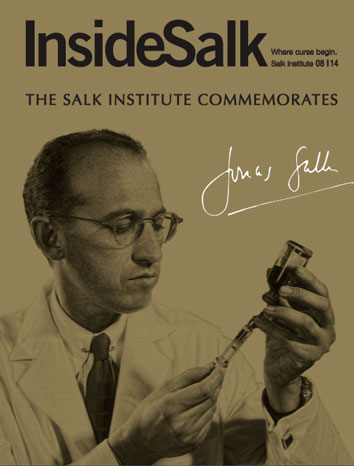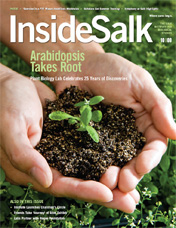Tiny Microscopes Reveal Hidden Role Of Nervous System Cells
A microscope about the size of a penny is giving scientists a new window into the everyday activity of cells within the spinal cord. The new miniaturized imaging methods, described on April 28, 2016 in Nature Communications, reveal more about nervous system function and could lead to pain treatments for spinal cord injuries, chronic itch and diseases such as amyotrophic lateral sclerosis (ALS).
The spinal cord has proven challenging for live observation in part because it is close to pulsating organs, which can hinder stable views of cells within. However, by building upon his miniaturized microscopes and developing new procedural and computational approaches, Salk Assistant Professor Axel Nimmerjahn, together with first author Kohei Sekiguchi and colleagues, were able to capture the action of living cells in real time and during vigorous movements.
The miniaturized technology offers unprecedented insight into nervous system function and could lead to novel pain treatments for spinal cord injuries and neurodegenerative diseases.
By visualizing changes in cellular activity in awake, roaming mice, the team found that distinct stimuli—such as light touch or pressure—activate different subsets of spinal sensory neurons. Certain features, like the intensity or duration of a given stimulus, were also reflected in the activity of the neurons.
Surprisingly, the study revealed that astrocytes—cells in the nervous system traditionally viewed as merely supportive—unexpectedly react to intense sensation. Though the astrocytes cannot send electrical signals like neurons can, they generated their own chemical signals in a coordinated way during intense stimuli.
“Now we can look at disease contexts like spinal cord injury and see how treatments actually affect the cells,” says Nimmerjahn.
Featured Stories
 Beyond DNA: Unlocking the Secrets of the EpigenomeA layer of regulatory information on top of DNA is proving to be as important as genes for development, health and sickness.
Beyond DNA: Unlocking the Secrets of the EpigenomeA layer of regulatory information on top of DNA is proving to be as important as genes for development, health and sickness. Tapping our Immune System’s SuperpowerWe all have a superhero—or supervillian—inside our bodies. It’s called our immune system. Every day, a healthy immune system repels a host of adversaries—bacteria, viruses, parasites—you name it!
Tapping our Immune System’s SuperpowerWe all have a superhero—or supervillian—inside our bodies. It’s called our immune system. Every day, a healthy immune system repels a host of adversaries—bacteria, viruses, parasites—you name it! All about town with Pablo HollsteinGrowing up in Quito, Ecuador, Pablo Hollstein was passionate—and precise —about science from an early age.
All about town with Pablo HollsteinGrowing up in Quito, Ecuador, Pablo Hollstein was passionate—and precise —about science from an early age.




















































